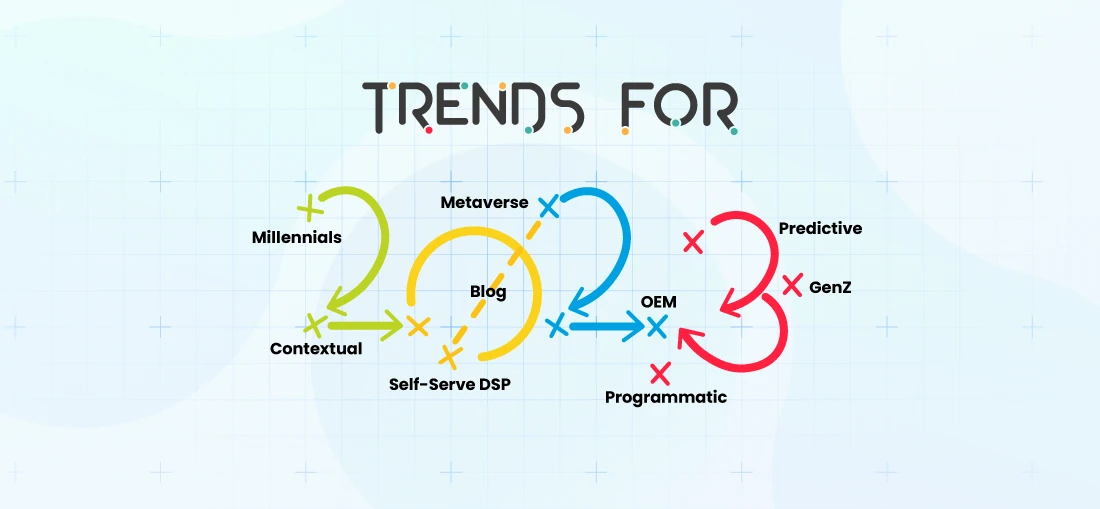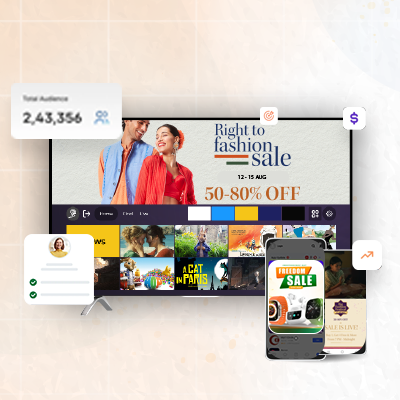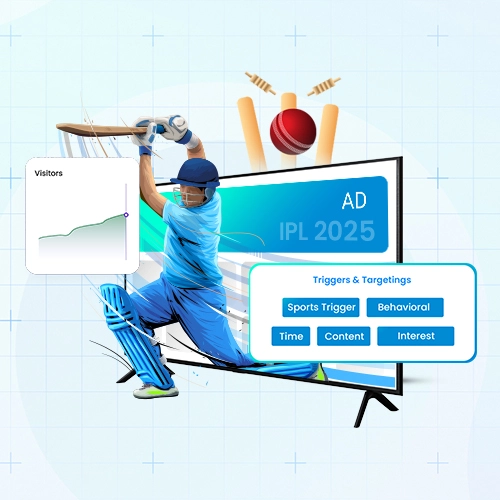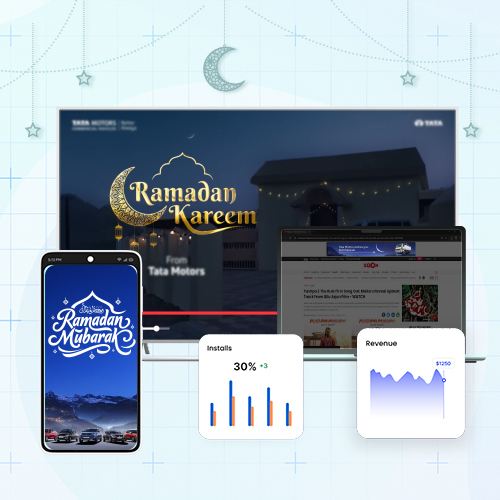It’s true that when any trend becomes a benchmark, we desire to follow and experiment with it in all good ways. For example, the trends in the fashion industry come and go but they often encourage us to style and maintain our wardrobes accordingly. Similarly, the trends in advertising play a significant role in the growth and development of the mobile app ecosystem.
The year 2022 observed different trends and marketing strategies that helped brands to stand out. Now Moving ahead in 2023, I believe that there are some Mobile Advertising Trends that will evolve and would effectively draw users’ attention towards a campaign with a better user experience. However, some trends will remain at the forefront of marketing practices and a few will come up with more enhancements in upcoming years.
Self-Serve Advertising: In the coming year marketers will be better able to cutthroat the market competition as Self-Serve DSP takes the ball in their court providing them with endless options to discover the best-performing advertising strategy such as In-App, OEM etc. Owing to this, presently, the global digital ad spend on mobile is 374.80 billion USD which is projected to reach 690.20 billion USD by 2027(source: Statista). The spike in ad spends is also due to its data maths that allows advertisers to tap into the mobile-first audience at specific inventories. It provides the datalicious report with real-time results which encourages them to monitor the right-performing sources and wisely invest in the best-performing channels; which is why it will be evolving better in near future.
Metaverse: Currently, it is establishing a benchmark in the industry but soon will become an unsurpassed luxury for marketers. In fact, in 2022, Metaverse‘s market share is $47.48 billion which will reach $678.8 billion by 2030 since it brings the virtual & physical world together with real experiences (source: Statista). This practice is gradually bridging the gap between the advertiser and the audience because its interconnected virtual amenities massively amaze consumers to dig dive into the space and spend more time on their mobile screens. This opens opportunities for marketers to better advertise their brands since consumers also enjoy experimenting with the products on their virtual avatars which drive quality results.
Sustainable Audience: Though users these days are mobile-first & friendly but I feel that GenZ & Millennials are the most proactive ones among the fraternity of internet netizens since they spend 4 hours & 15 minutes per day on mobile. 78% of GenZ & 74% of Millennials consider mobile as their first and most important go-to place to consult anything (source: Business of Apps). Therefore, marketers are tapping into such audiences and will continue to acquire and engage them as they are more attracted towards online offerings and have more potential to make desired actions. So, these users will be more powerful ground for marketers for maximizing brand reach, recognition and recall.
Programmatic Performance: Marketers often wish to acquire more traffic without increasing bids wherein, Programmatic Performance is giving their concern an end. Moreover by 2027, 89% of the global digital advertising revenue will be generated through Programmatic Advertising because, in the digital advert space, it has taken the first seat and will be taking the industry by storm (source: Statista). It provides marketers with better brand-building opportunities, incorporating advanced technologies with a pool of matrices for audience-based marketing. Furthermore, this also enables marketers to execute the campaign with more brand safety and hygiene, resulting in effective ROI.
Contextual Marketing: Well, I would like to say that Contextual Advertising is leaving no stone unturned in tapping into the audience that shows interest in brands. Presently, the global contextual ad spend is 201.89 billion USD which is projected to reach a staggering 376.2 billion USD by 2027 (source: Statista). This is because with Google phasing out third-party cookies, this strategy is already at a pace of becoming a savior for brands as marketers can contextually target the keywords that seem relevant to the adverts. Based on keyword targeting, they can further show the content to the audience interested in the brand’s offerings. For example, 2022 is about to end so, an advert for ‘Xmas & New Year Sales’ can be placed at the right touchpoints inside the inventory that can encourage netizens to make the respective in-app actions.
OEM Advertising: This is a new-age tech that is gradually reforming the digital ecosystem and will be revolutionizing it more in the upcoming years. Since October 2022, the top OEM holds a market share of 56% globally providing marketers with advanced ad placement and targeting options (source: Statcounter). This is why OEM Advertising will be a breakthrough for user acquisition and engagement because there is no involvement of any third-party mediator between OEM and a marketer. This makes the process streamlined and campaign execution easy as marketers get complete control on ad spend with effective monitoring of campaign performance.
Predictive Marketing: From the time when marketers got to know about consent-based marketing, Predictive Marketing became like a helping hand for them and will become a great trendsetter shortly due to gradual developments in AI/ML-enabled technology. Since it involves data science, it helps marketers to monitor the strategies that work the best for effective optimization and performance of the campaign. Moreover, with this practice, they can also better understand the audience behaviour pattern based on which, a gap left wide through privacy protocols also gets bridged between brands and consumers, securing their data without infringing their privacy.
In the advertising world; with a plethora of opportunities and marketing strategies, let’s see what marketers can witness in 2023 to make their effective brand presence apart from the trends.
Written by: Sanjeev Bankira, Country Head



